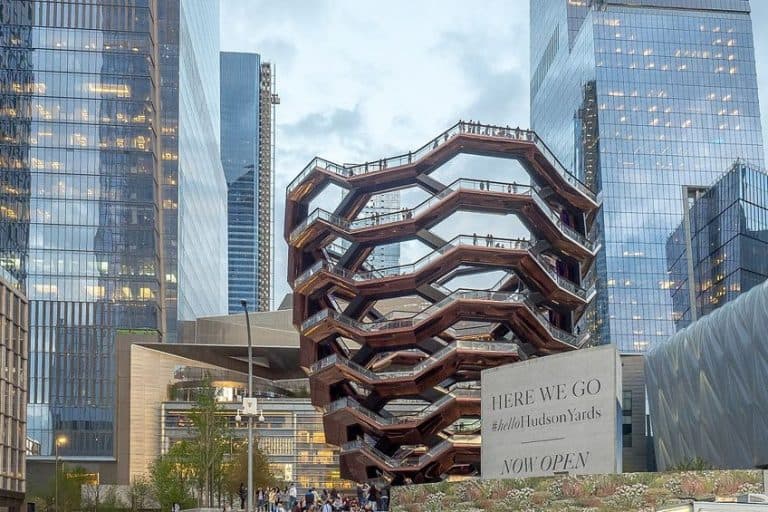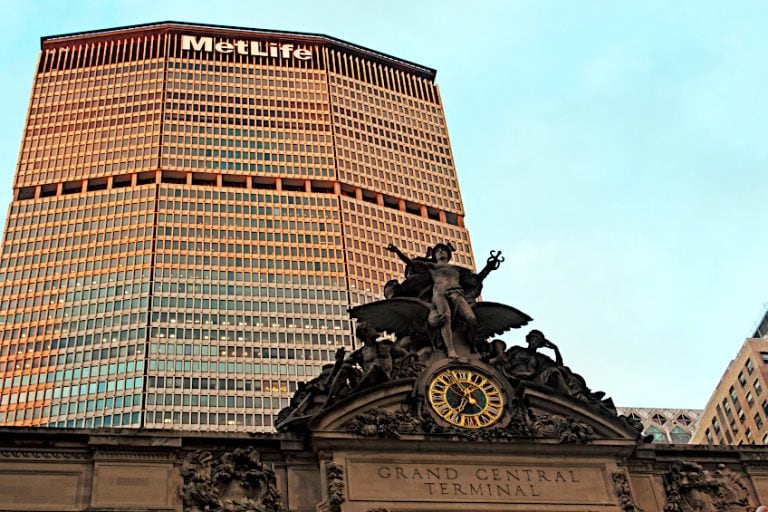Prague Castle – A Guide to the Prague Castle’s History
Prague Castle is one of the oldest castles in Europe, but it is also a fascinating piece of architectural history that deserves to be known. In this article, we will examine Prague Castle’s history, interior and exterior architecture, the architects who worked on it over the centuries, and the present uses of the structure. Keep reading to learn more about Prague Castle!
Table of Contents
A Look at Prague Castle
| Architect | Various |
| Date Constructed | 870 – 1929 |
| Function | Presidential residence |
| Materials Used | Stone, brick, wood, and metal |
| Location | Prague, Czech Republic |
Prague Castle is a fascinating piece of architectural history located within the capital city of the Czech Republic. The Prague Castle’s history is one of constant change and reconstruction, it is the history of architecture that unfolds before one’s eyes. It is also a staggeringly large structure that is considered to be the largest ancient castle in the world.

There are many different structures that form part of the larger Prague Castle complex, and we will examine many of those different parts of the castle over the course of this article. So, let’s dive straight in and see why this particular castle has such a fascinating history and why it is a sheer architectural delight.
Prague Castle’s History
The history of the Prague Castle is a particularly ancient one, and one that begins back in the 9th century. It is also the history of one reconstruction after another. The very first time a walled building was constructed on the site was in 870 CE, and it was a church. This church was known as the Church of the Virgin Mary, but this church no longer exists as it was utterly destroyed, but it was eventually joined by two other church structures that were constructed later in its history. The castle structure also saw the addition of a convent, and it was the very first convent of its kind in Bohemia.
These are the earliest origins of this castle but starting in the 12th century, a palace structure was soon built atop the area too, and this large Romanesque palace would become what many associate with the castle by today’s standards. This palace was then extensively altered over the years, and it was specifically under the reign of King Ottokar II that the palace was both reconstructed and fortified as a residence.
There were further additions and changes made, such as the reconstruction of the structure in the 14th century in a Gothic style at the behest of Charles II.
It was at this same time that a large basilica was added to the complex, but the basilica would not be completed for a particularly lengthy period. Instead, there was a time when the castle was not even inhabited. However, in 1485, the latest king, Vladislaus II Jagiellon, began to rebuild the abandoned castle (once again). Under his rule. The Vladislav Hall was constructed, and additional defensive constructions were added around Prague Castle. This did not mean that the many reconstructions of Prague Castle’s history were anywhere near done because there was a fire in 1541 that necessitated yet another period of reconstruction (this time in a Renaissance style).
Shortly after this, during the reign of Ferdinand I, the Prague Castle was used as the primary residence of the monarchs, and new additions were added, such as the Spanish Hall. There was still time for more strife in Prague Castle’s history though, as the Third Defenestration of Prague took place within the castle in 1618, and this historical event led to a revolt known as the Bohemian Revolt. Wars plagued the region thereafter and, once again, the castle was damaged.
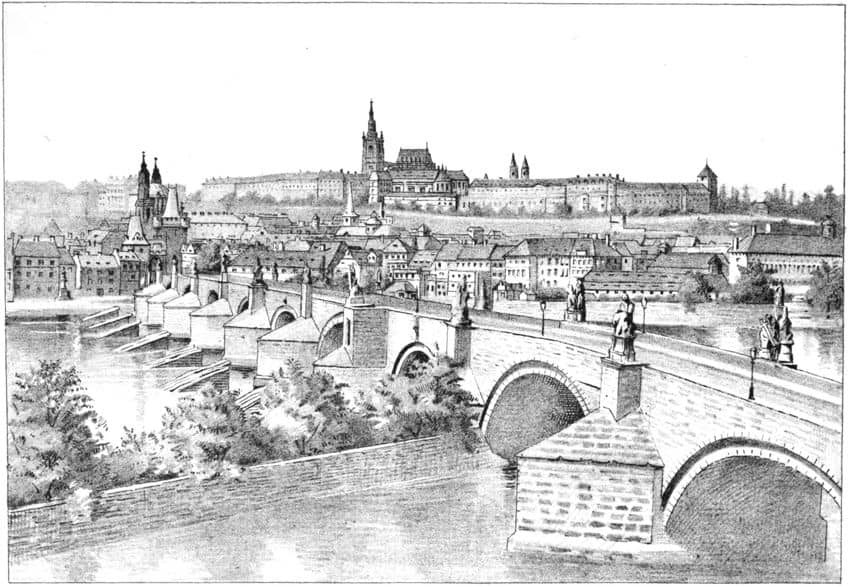
It was only in the late 18th century that reconstruction efforts started in earnest once again. The palace was used as a royal palace for quite some time thereafter, but changes in the political situation in the country led to the establishment of the Prague Castle as a new presidential residence for the newly established Czechoslovak Republic.
Throughout the 20th century, Prague Castle saw a few historical events within its walls. When the Nazis invaded Czechoslovakia in the 1930s, Adolf Hitler spent a night in the ancient structure, and the castle even became a base of operations during the Second World War. Once the Nazi occupation ended and the communist party eventually came to power in the country, Prague Castle served as the presidential residence once again. This is how the castle has continued to operate into the present day.
Prague Castle’s Exterior Architecture
It is difficult to definitively gaze upon the architecture of Prague Castle as anything unified because it features no unity of style whatsoever. The Prague Castle’s history is one of reconstruction after reconstruction. Each time a new reconstruction of the building was performed, new architectural styles were added and implemented. Both outside and inside Prague Castle, the architecture is profoundly distinct from one section to the next.
Because the Prague Castle is not simply one structure but rather a collection of structures, there are various buildings within its general region. For instance, St. Vitus Cathedral is one of the longest-constructed parts of the castle complex as it was constructed over a period of nearly six centuries. It includes Gothic, Baroque, Renaissance, and Neo-Gothic elements throughout its design. The nave is Gothic, the dome is Renaissance, there are stained glass windows and mosaics, a Neo-Gothic spire, and so on.
Other parts of the structure are not quite as architecturally diverse, but each does still include a different architectural style.
The Old Royal Palace is Romanesque and is one of the oldest portions, whereas the New Royal Palace uses a general Baroque style (with Mannerist additions). The latter portion contains a number of other important architectural elements in the Prague Castle, such as the Spanish Hall. In addition to this, the Belvedere is also located within Prague Castle, and it was the summer palace of several monarchs (starting with Ferdinand I). It has come to be recognized in subsequent years as one of the most stunning examples of Renaissance architecture in the country.

All of this essentially means that Prague Castle’s exterior architecture makes use of a variety of types. There are Romanesque circular structures with relatively simple designs, Gothic additions with various pointed arches and ribbed vaults, Renaissance reconstructions with proportional designs, Baroque improvements to display a far more opulent and decadent royal visage, and even Mannerist redesigns that produced far more unconventional changes to what had already been designed. The Prague Castle is, ultimately, a mess of different architectural styles that shows the history of European architecture within one location. This makes it a particularly fascinating sight to behold.
Prague Castle’s Interior Architecture
Prague Castle’s interior architecture is, essentially, similar to the exterior. There are various styles that were adopted within its walls, and each of those walls tells the story of Prague Castle’s history as well as the history of European architecture. There are Romanesque early aspects inside Prague Castle, such as the use of thick walls and minimal decoration. This can be seen in locations like St. George’s Basilica. These areas in Prague Castle’s interior lack the kind of grandiose displays that would come to represent much of later architecture throughout Europe.
Once Gothic additions came into the scene, such as can be seen in locations within Prague Castle like St. Vitus Cathedral, the relative plainness of Romanesque architectural flourishes had come to an end. Intricate stained-glass windows and statues, high ceilings to bring in as much light as possible, and a stunning mausoleum are considered typified aspects of this period of Prague Castle’s history.
Thereafter, Renaissance changes came to the Prague Castle, and in keeping with the architectural beliefs of Renaissance architects, these new additions emulated Classical architecture.
Locations within Prague Castle’s interior, such as the Belvedere, made use of these styles with fountains, symmetrical designs, and geometric shapes. The addition of various classically inspired works of art was also displayed in the Renaissance-era gallery inside Prague Castle. The later opulence of Baroque and Mannerist styles would cover parts of the New Royal Palace to transform it into a decadent and extravagant display of artistic paintings and sculptures throughout Prague Castle’s interior. Some of the primary areas that are still used to this day for presidential purposes are those that make use of these styles.
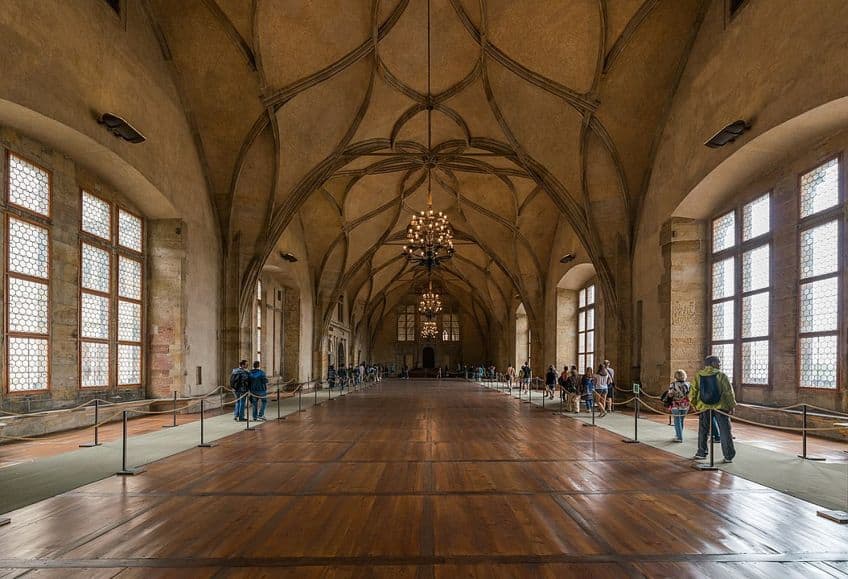
All of this ultimately shows that Prague Castle’s interior and exterior architecture reflects the history of the castle and the Czech Republic through the ages. Newer and newer styles were added inside Prague Castle and throughout its general region. To walk through the walls of the castle is to see the history of European architecture unfold before one’s eyes.
Prague Castle’s Architects
There is no such thing as a singular Prague Castle architect. There was not even an architect who designed a central plan for the castle complex as a whole. Instead, thanks to the incredibly lengthier duration over which the building as a whole was built, there have been various architects who have contributed to the design of Prague Castle’s interior and exterior architecture over the years.
The earliest parts of the castle, such as the Romanesque parts, have unknown architects as record-keeping was particularly terrible in ancient history. However, some of the earliest architects that we are familiar with include figures like Matthias of Arras in the 14th century and his replacement Peter Parler (both of whom made use of various Gothic styles).
Later, figures like Benedikt Rejt came onto the scene to add Renaissance aspects to the castle as a whole, and this was continued by various unknown Italian architects who were hired in the early 16th century. There have been so many architects over the years that there has been little recorded about many of them.
One of the last architects to work on the Prague Castle was Josip Plečnik. This architect made various renovations in the early-20th century, and while he did not necessarily make any major changes, he did add modern conveniences. He saw to the addition of electric lighting, elevators, and so on. Even ancient structures such as this need to be brought into the modern era.
The Current Uses of Prague Castle
Prague Castle has been in use for the majority of its existence, and it has typically served as a royal residence, but ever since the 20th century, this has no longer been the case. The advent of a non-monarchist government within the Czech Republic meant that the Prague Castle no longer needed to house a monarch but could instead house a president.
At the time of writing, the man who principally calls Prague Castle his home is Petr Pavel, the current president of the country. However, there are other people who live within the walls, but they are generally all employees of the government and serve a role in a similar capacity to the president. They do not call the Prague Castle their home because they necessarily wish to do so, but because it is expected of them to do so.
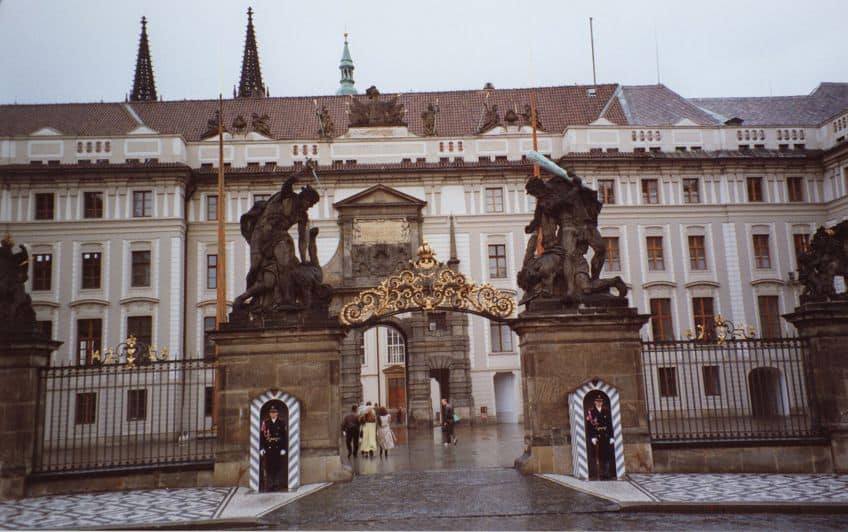
However, Prague Castle does not only serve the president. Instead, it also serves as an important location for the preservation of aspects of the history of the Czech Republic in general. This can be seen in how one of the most important pieces of ancient history is stored within the castle’s walls: the Bohemian Crown Jewels.
These jewels are safely stored away within the castle, but there are several reproductions of the jewels that can be seen by the public. One of the most interesting pieces within the larger Bohemian Crown Jewels collection is the crown of Charles IV, and that crown was created for the monarch’s 1347 coronation.
That makes this particular crown the fourth-oldest crown in Europe.
Other than the Crown Jewels, Prague Castle is also a popular tourist destination that allows visitors to peruse some of the ancient pieces of history within its walls. There is a large art collection that belonged to Rudolph II, and it is made up of not only paintings but also books and scientific instruments. There is also a massive picture gallery that has over a hundred paintings from the 16th to 18th centuries, and several immensely famous painters over the centuries have their work displayed within that gallery.

The Prague Castle also hosts a treasury that contains many important religious artifacts from the history of Christianity within the region. All of these various items that are held within the walls can be visited by the public, and while these various items are held inside Prague Castle, it is also worth visiting Prague Castle simply because it is an architectural delight thanks to its disparate array of architectural styles that were built over hundreds of years within the castle.
And that marks the end of our discussion about Prague Castle. We have discussed Prague Castle’s history, interior and exterior architecture, the architects who worked on it over the centuries, and the present uses of the building. Hopefully, you have learned a lot about this important piece of European architectural history. Walking through Prague Castle is walking through architectural history, and if you get the chance to have a look, do yourself the favor of doing so!
Frequently Asked Questions
What Is Prague Castle?
Prague Castle is a large castle complex that was built, rebuilt, and redesigned many times over its long and illustrious history. Its earliest origins make it one of the oldest castles in Europe, as the first part of the castle was completed in 870, and numerous additions were made throughout the years to make it one of the most fascinating pieces of European architecture. The castle has been home to kings, queens, and presidents over its immensely long history.
Who Designed Prague Castle?
There was never a singular architect behind Prague Castle’s interior or exterior architecture. This castle complex was designed over hundreds of years, and as such, no one person would ever be able to capture it all. The earliest known architects date back to the 14th century with figures such as Matthias of Arras. One of the latest architects to work on the castle was Josip Plečnik in the 20th century, and he was responsible for many of the 20th-century renovations.
What Is the Architectural Style of Prague Castle?
There is no one architectural style of Prague Castle. Instead, this castle complex makes use of a variety of architectural styles as new additions were made throughout the years. There are elements of Romanesque, Gothic, Renaissance, Baroque, and Mannerist architectural styles throughout the Prague Castle’s interior and exterior architecture. Essentially, a stroll through Prague Castle is a stroll through the architectural history of Europe.
What Is Stored in Prague Castle?
Prague Castle may be used as a presidential residence at present, but it is also an important site for the preservation of certain items, such as the Bohemian Crown Jewels, a vast art collection that had been accumulated by Rudolph II, the treasury that contains numerous religious relics, and a large gallery.
Who Lives in Prague Castle?
At present, Prague Castle is the home of the President of the Czech Republic, Petr Pavel. His offices are within some of the main buildings, whereas his actual home is in the southern gardens. The castle as a whole has been home to numerous monarchs over the years, and the continuation of its use as a presidential residence makes a lot of sense for that reason.
Justin van Huyssteen is a freelance writer, novelist, and academic originally from Cape Town, South Africa. At present, he has a bachelor’s degree in English and literary theory and an honor’s degree in literary theory. He is currently working towards his master’s degree in literary theory with a focus on animal studies, critical theory, and semiotics within literature. As a novelist and freelancer, he often writes under the pen name L.C. Lupus.
Justin’s preferred literary movements include modern and postmodern literature with literary fiction and genre fiction like sci-fi, post-apocalyptic, and horror being of particular interest. His academia extends to his interest in prose and narratology. He enjoys analyzing a variety of mediums through a literary lens, such as graphic novels, film, and video games.
Justin is working for artincontext.org as an author and content writer since 2022. He is responsible for all blog posts about architecture, literature and poetry.
Learn more about Justin van Huyssteen and the Art in Context Team.
Cite this Article
Justin, van Huyssteen, “Prague Castle – A Guide to the Prague Castle’s History.” Art in Context. July 4, 2023. URL: https://artincontext.org/prague-castle/
van Huyssteen, J. (2023, 4 July). Prague Castle – A Guide to the Prague Castle’s History. Art in Context. https://artincontext.org/prague-castle/
van Huyssteen, Justin. “Prague Castle – A Guide to the Prague Castle’s History.” Art in Context, July 4, 2023. https://artincontext.org/prague-castle/.




